In-Season Yield Prediction of Cabbage with a Hand-Held Active Canopy Sensor
Abstract
:1. Introduction
2. Materials and Methods
2.1. Site Description
2.2. Experiment Design
2.3. Data Collection
2.4. Statistical Analyses
3. Results
3.1. Yield Responses to N Rates
3.2. Relationships between NDVI Measurements and Cabbage Yields
3.3. Predicting Cabbage Yields Using Measured NDVI at the Optimum Time
3.4. Modification of the Yield Prediction Equation with DFT and CGDD Values
3.5. Model Validation
4. Discussion
4.1. In-Season Prediction of Cabbage Yield
4.2. Comparison of Various Yield Prediction Equations
4.3. Effect of Climatic Variability on the Yield Prediction Model
4.4. Effect of the Cultivar Difference on the Yield Prediction Model
5. Conclusions
Acknowledgments
Author Contributions
Conflicts of Interest
Abbreviations
| NDVI | normalized difference vegetation index |
| DAT | days after transplanting |
| DFP | days from transplanting when GDD > 0 |
| GDD | growing degree days |
| CGDD | cumulative growing degree days |
| RMSE | root mean square error |
References
- Singh, J.; Upadhyay, A.K.; Bahadur, A.; Singh, B.; Singh, K.P.; Rai, M. Antioxidant phytochemicals in cabbage (Brassica oleracea L. var. capitata). Sci. Hortic. 2006, 108, 233–237. [Google Scholar] [CrossRef]
- Chen, C.; Zhuang, M.; Fang, Z.Y.; Wang, Q.B.; Zhang, Y.Y.; Liu, Y.M.; Yang, L.M.; Cheng, F. A co-dominant marker BOE332 applied to marker-assisted selection of homozygous male-sterile plants in cabbage (Brassica oleracea var. capitata L.). J. Integr. Agric. 2013, 12, 596–602. [Google Scholar] [CrossRef]
- Food and Agriculture Organization of the United Nations. FAO Statistics Database; Food and Agriculture Organization of the United Nations: Rome, Italy, 2015. [Google Scholar]
- Min, M.; Lee, W.S.; Kim, Y.H.; Bucklin, R.A. Nondestructive detection of nitrogen in Chinese cabbage leaves using VIS-NIR spectroscopy. Hortscience 2006, 41, 162–166. [Google Scholar]
- Erley, G.S.A.; Dewi, E.R.; Nikus, O.; Horst, W.J. Genotypic differences in nitrogen efficiency of white cabbage (Brassica oleracea L.). Plant Soil 2009, 328, 313–325. [Google Scholar] [CrossRef]
- Tiwari, K.N.; Singh, A.; Mal, P.K. Effect of drip irrigation on yield of cabbage (Brassica oleracea L. var. capitata) under mulch and non-mulch conditions. Agric. Water Manag. 2003, 58, 19–28. [Google Scholar] [CrossRef]
- Everaarts, A.P.; De Moel, C.P. The effect of nitrogen and the method of application on yield and quality of white cabbage. Eur. J. Agron. 1998, 9, 203–211. [Google Scholar] [CrossRef]
- Ma, B.L.; Biswas, D.K.; Herath, A.W.; Whalen, J.K.; Ruan, S.Q.; Caldwell, C.; Earl, H.; Vanasse, A.; Scott, P.; Smith, D.L. Growth, yield, and yield components of canola as affected by nitrogen, sulfur, and boron application. J. Plant Nutr. Soil Sci. 2015, 178, 658–670. [Google Scholar] [CrossRef]
- Min, J.; Zhang, H.L.; Shi, W.M. Optimizing nitrogen input to reduce nitrate leaching loss in greenhouse vegetable production. Agric. Water Manag. 2012, 111, 53–59. [Google Scholar] [CrossRef]
- Shi, W.M.; Yao, J.; Yan, F. Vegetable cultivation under greenhouse conditions leads to rapid accumulation of nutrients, acidification and salinity of soils and groundwater contamination in south-eastern China. Nutr. Cycl. Agroecosyst. 2008, 83, 73–84. [Google Scholar] [CrossRef]
- Shen, W.S.; Lin, X.G.; Shi, W.M.; Min, J.; Gao, N.; Zhang, H.Y.; Yin, R.; He, X.H. Higher rates of nitrogen fertilization decrease soil enzyme activities, microbial functional diversity and nitrification capacity in a Chinese polytunnel greenhouse vegetable land. Plant Soil 2010, 337, 137–150. [Google Scholar] [CrossRef]
- Kleinhenz, M.D. A proposed tool for preharvest estimation of cabbage yield. Horttechnology 2003, 13, 182–185. [Google Scholar]
- Zhang, K.F.; Greenwood, D.J.; White, P.J.; Burns, I.G. A dynamic model for the combined effects of N, P and K fertilizers on yield and mineral composition; description and experimental test. Plant Soil 2007, 298, 81–98. [Google Scholar] [CrossRef]
- Caturegli, L.; Corniglia, M.; Gaetani, M.; Grossi, N.; Magni, S.; Migliazzi, M.; Angelini, L.; Mazzoncini, M.; Silvestri, N.; Fontanelli, M.; et al. Unmanned aerial vehicle to estimate nitrogen status of turfgrasses. PLoS ONE 2016, 11, e0158268. [Google Scholar] [CrossRef] [PubMed]
- Broge, N.H.; Leblanc, E. Comparing prediction power and stability of broadband and hyperspectral vegetation indices for estimation of green leaf area index and canopy chlorophyll density. Remote Sens. Environ. 2001, 76, 156–172. [Google Scholar] [CrossRef]
- Aparicio, N.; Villegas, D.; Araus, J.L.; Casadesus, J.; Royo, C. Relationship between growth traits and spectral vegetation indices in durum wheat. Crop Sci. 2002, 42, 1547–1555. [Google Scholar] [CrossRef]
- Hansen, P.M.; Schjoerring, J.K. Reflectance measurement of canopy biomass and nitrogen status in wheat crops using normalized difference vegetation indices and partial least squares regression. Remote Sens. Environ. 2003, 86, 542–553. [Google Scholar] [CrossRef]
- Prasad, B.; Carver, B.F.; Stone, M.L.; Babar, M.A.; Raun, W.R.; Klatt, A.R. Potential use of spectral reflectance indices as a selection tool for grain yield in winter wheat under great plains conditions. Crop Sci. 2007, 47, 1426–1440. [Google Scholar] [CrossRef]
- Raun, W.R.; Solie, J.B.; Johnson, G.V.; Stone, M.L.; Lukina, E.V.; Thomason, W.E.; Schepers, J.S. In-season prediction of potential grain yield in winter wheat using canopy reflectance. Agron. J. 2001, 93, 131–138. [Google Scholar] [CrossRef]
- Samborski, S.M.; Tremblay, N.; Fallon, E. Strategies to make use of plant sensors-based diagnostic information for nitrogen recommendations. Agron. J. 2009, 101, 800–816. [Google Scholar] [CrossRef]
- Pimstein, A.; Karnieli, A.; Bansal, S.K.; Bonfil, D.J. Exploring remotely sensed technologies for monitoring wheat potassium and phosphorus using field spectroscopy. Field Crops Res. 2011, 121, 125–135. [Google Scholar] [CrossRef]
- Govaerts, B.; Verhulst, N.; Sayre, K.D.; De Corte, P.; Goudeseune, B.; Lichter, K.; Crossa, J.; Deckers, J.; Dendooven, L. Evaluating spatial within plot crop variability for different management practices with an optical sensor? Plant Soil 2007, 299, 29–42. [Google Scholar] [CrossRef]
- Kipp, S.; Mistele, B.; Schmidhalter, U. The performance of active spectral reflectance sensors as influenced by measuring distance, device temperature and light intensity. Comput. Electron. Agric. 2014, 100, 24–33. [Google Scholar] [CrossRef]
- Blackmer, T.M.; Scheper, J.S.; Varvel, G.E. Light reflectance compared with other nitrogen stress measurements in corn leaves. Agron. J. 1994, 86, 934–938. [Google Scholar] [CrossRef]
- Campbell, J.B.; Wynne, R.H. Introduction to Remote Sensing; CRC Press: Boca Raton, FL, USA, 2002. [Google Scholar]
- Olfs, H.W.; Blankenau, K.; Brentrup, F.; Jasper, J.; Link, A.; Lammel, J. Soil- and plant-based nitrogen-fertilizer recommendations in arable farming. J. Plant Nutr. Soil Sci. 2005, 168, 414–431. [Google Scholar] [CrossRef]
- Lofton, J.; Tubana, B.S.; Kanke, Y.; Teboh, J.; Viator, H.; Dalen, M. Estimating sugarcane yield potential using an in-season determination of normalized difference vegetative index. Sensors 2012, 12, 7529–7547. [Google Scholar] [CrossRef] [PubMed]
- Macnack, N.; Khim, B.C.; Mullock, J.; Raun, W. In-season prediction of nitrogen use efficiency and grain protein in winter wheat (Triticum aestivum L.). Commun. Soil Sci. Plant Anal. 2014, 45, 2480–2494. [Google Scholar] [CrossRef]
- Cao, Q.; Miao, Y.X.; Feng, G.H.; Gao, X.W.; Li, F.; Liu, B.; Yue, S.C.; Cheng, S.S.; Ustin, S.L.; Khosla, R. Active canopy sensing of winter wheat nitrogen status: An evaluation of two sensor systems. Comput. Electron. Agric. 2015, 112, 54–67. [Google Scholar] [CrossRef]
- Teal, R.K.; Tubana, B.; Girma, K.; Freeman, K.W.; Arnall, D.B.; Walsh, O.; Raun, W.R. In-season prediction of corn grain yield potential using normalized difference vegetation index. Agron. J. 2006, 98, 1488–1494. [Google Scholar] [CrossRef]
- Sanderson, K.R.; Fillmore, S.A.E. Slow-release nitrogen fertilizer in carrot production on Prince Edward Island. Can. J. Plant Sci. 2012, 92, 1223–1228. [Google Scholar] [CrossRef]
- Dunn, B.; Shrestha, A.; Goad, C. Use of nondestructive sensors to quantify ornamental kale nitrogen status. J. Plant Nutr. 2015, 39, 1123–1130. [Google Scholar] [CrossRef]
- Boote, K.J.; Jones, J.W.; Pickering, N.B. Potential uses and limitations of crop models. Agron. J. 1996, 88, 704–716. [Google Scholar] [CrossRef]
- Harrell, D.L.; Tubana, B.S.; Walker, T.W.; Phillips, S.B. Estimating rice grain yield potential using normalized difference vegetation index. Agron. J. 2011, 103, 1717–1723. [Google Scholar] [CrossRef]
- Sun, H.J.; Zhang, H.L.; Powlson, D.; Min, J.; Shi, W.M. Rice production, nitrous oxide emission and ammonia volatilization as impacted by the nitrification inhibitor 2-chloro-6-(trichloromethyl)-pyridine. Field Crops Res. 2015, 173, 1–7. [Google Scholar] [CrossRef]
- Dai, Z.L.; Sun, C.Q.; Pan, Y.P.; Qin, W.B.; Yao, Y.M.; Pan, Y.F.; Zhang, Z.C. Effect of nitrogen application rates on head-splitting resistance of cabbage cultivar Ruigan 20. Jiangsu J. Agric. Sci. 2013, 29, 450–452, (In Chinese with English abstract). [Google Scholar]
- Groenbaek, M.; Kristensen, H.L. Split dose fertilization with urea increases glucosinolate contents in white cabbage (Brassica oleracea L. var. capitata) under experimental pot conditions. Sci. Horticul. 2014, 168, 64–72. [Google Scholar] [CrossRef]
- Bijay, S.; Varinderpal, S.; Yadvinder, S.; Thind, H.S.; Ajay, K.; Satinderpal, S.; Choudhary, O.P.; Gupta, R.K.; Vashistha, M. Supplementing fertilizer nitrogen application to irrigated wheat at maximum tillering stage using chlorophyll meter and optical sensor. Agric. Res. 2013, 2, 81–89. [Google Scholar] [CrossRef]
- Ju, X.T.; Xing, G.X.; Chen, X.P.; Zhang, S.L.; Zhang, L.J.; Liu, X.J.; Cui, Z.L.; Yin, B.; Christie, P.; Zhu, Z.L.; et al. Reducing environmental risk by improving N management in intensive Chinese agricultural systems. Proc. Natl. Acad. Sci. USA 2009, 106, 3041–3046. [Google Scholar] [CrossRef] [PubMed] [Green Version]
- Min, J.; Zhao, X.; Shi, W.M.; Xing, G.X.; Zhu, Z.L. Nitrogen balance and loss in a greenhouse vegetable system in southeastern China. Pedosphere 2011, 21, 464–472. [Google Scholar] [CrossRef]
- Yao, Y.K.; Miao, Y.X.; Huang, S.Y.; Gao, L.; Ma, X.B.; Zhao, G.M.; Jiang, R.F.; Chen, X.P.; Zhang, F.S.; Yu, K. Active canopy sensor-based precision N management strategy for rice. Agron. Sustain. Dev. 2012, 32, 925–933. [Google Scholar] [CrossRef]
- Gnyp, M.L.; Miao, Y.X.; Yuan, F.; Ustin, S.L.; Yu, K.; Yao, Y.K.; Huang, S.Y.; Bareth, G. Hyperspectral canopy sensing of paddy rice aboveground biomass at different growth stages. Field Crops Res. 2014, 155, 42–55. [Google Scholar] [CrossRef]
- Cao, Q.; Miao, Y.X.; Shen, J.N.; Yu, W.F.; Yuan, F.; Cheng, S.S.; Huang, S.Y.; Wang, H.Y.; Yang, W.; Liu, F.Y. Improving in-season estimation of rice yield potential and responsiveness to topdressing nitrogen application with crop circle active crop canopy sensor. Precis. Agric. 2015, 17, 136–154. [Google Scholar] [CrossRef]
- Kamiji, Y.; Yoshida, H.; Palta, J.A.; Sakuratani, T.; Shiraiwa, T. N applications that increase plant N during panicle development are highly effective in increasing spikelet number in rice. Field Crops Res. 2011, 122, 242–247. [Google Scholar] [CrossRef]
- Ali, A.M.; Thind, H.S.; Sharma, S.; Varinderpal, S. Prediction of dry direct-seeded rice yields using chlorophyll meter, leaf color chart and Greenseeker optical sensor in northwestern India. Field Crops Res. 2014, 161, 11–15. [Google Scholar] [CrossRef]
- Raun, W.R.; Solie, J.B.; Stone, M.L.; Martin, K.L.; Freeman, K.W.; Mullen, R.W.; Zhang, H.; Schepers, J.S.; Johnson, G.V. Optical sensor-based algorithm for crop nitrogen fertilization. Commun. Soil Sci. Plant Anal. 2005, 36, 2759–2781. [Google Scholar] [CrossRef]
- Inman, D.; Khosla, R.; Reich, R.M.; Westfall, D.G. Active remote sensing and grain yield in irrigated maize. Precis. Agric. 2007, 8, 241–252. [Google Scholar] [CrossRef]
- Li, Y.; Chen, D.; Walker, C.N.; Angus, J.F. Estimating the nitrogen status of crops using a digital camera. Field Crops Res. 2010, 118, 221–227. [Google Scholar] [CrossRef]
- Lukina, E.V.; Freeman, K.W.; Wynn, K.J.; Thomason, W.E.; Mullen, R.W.; Stone, M.L.; Solie, J.B.; Klatt, A.R.; Johnson, G.V.; Elliott, R.L.; et al. Nitrogen fertilization optimization algorithm based on in-season estimates of yield and plant nitrogen uptake. J. Plant Nutr. 2001, 24, 885–898. [Google Scholar] [CrossRef]
- Kim, S.J.; Ishida, M.; Matsuo, A.; Watanabe, M.; Watanabe, Y. Separation and identification of glucosinolates of vegetable turnip rape by LC/APCI-MS and comparison of their contents in ten cultivars of vegetable turnip rape (Brassica rapa L.). Soil Sci. Plant Nutr. 2001, 47, 167–177. [Google Scholar] [CrossRef]
- Kleinhenz, M.D.; Wszelaki, A. Yield and relationships among head traits in cabbage as influenced by planting date and cultivar. I. Fresh market. Hortscience 2003, 38, 1349–1354. [Google Scholar]
- Wang, Y.; Wang, D.J.; Zhang, G.; Wang, J. Estimating nitrogen status of rice using the image segmentation of G-R thresholding method. Field Crops Res. 2013, 149, 33–39. [Google Scholar] [CrossRef]
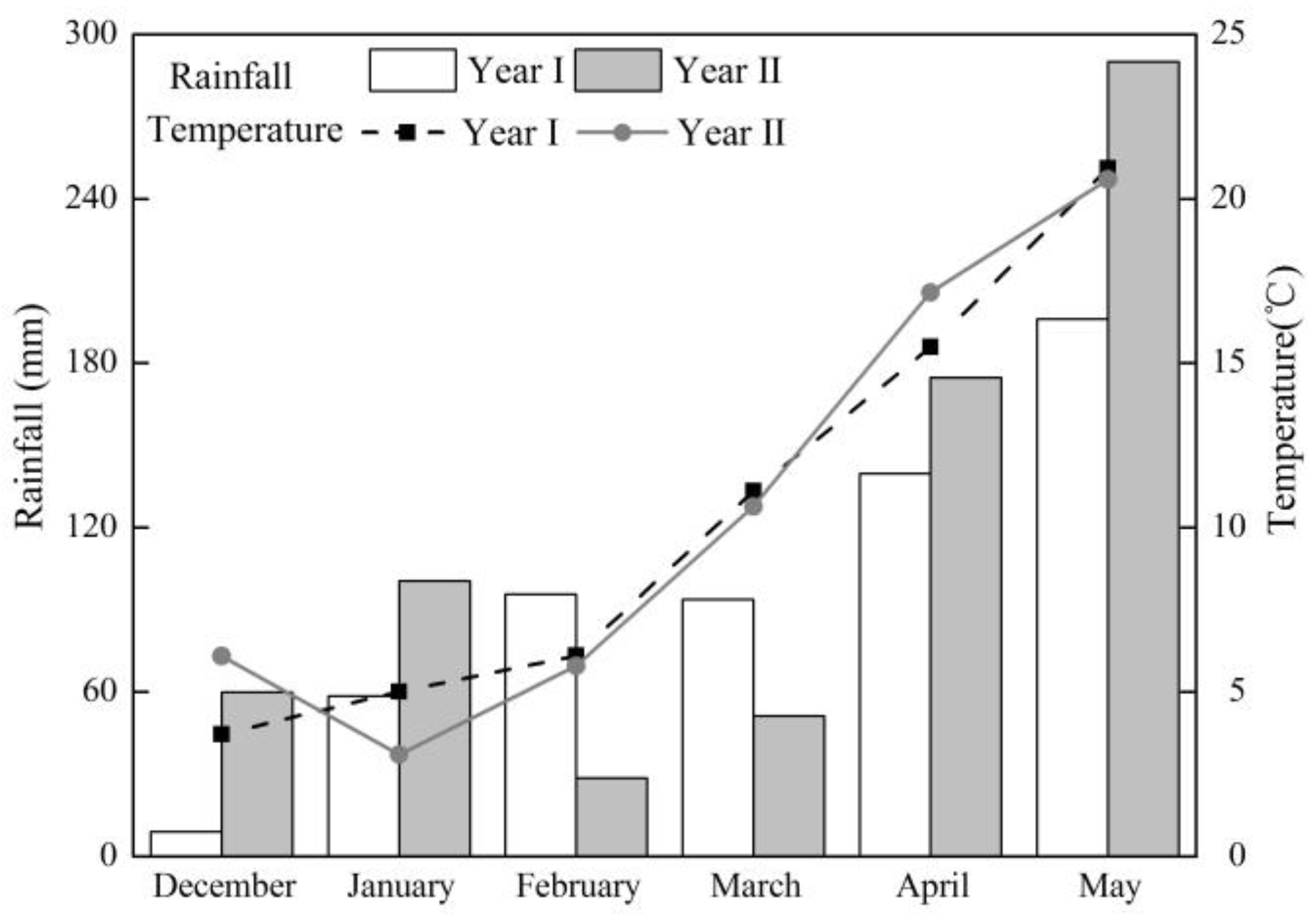
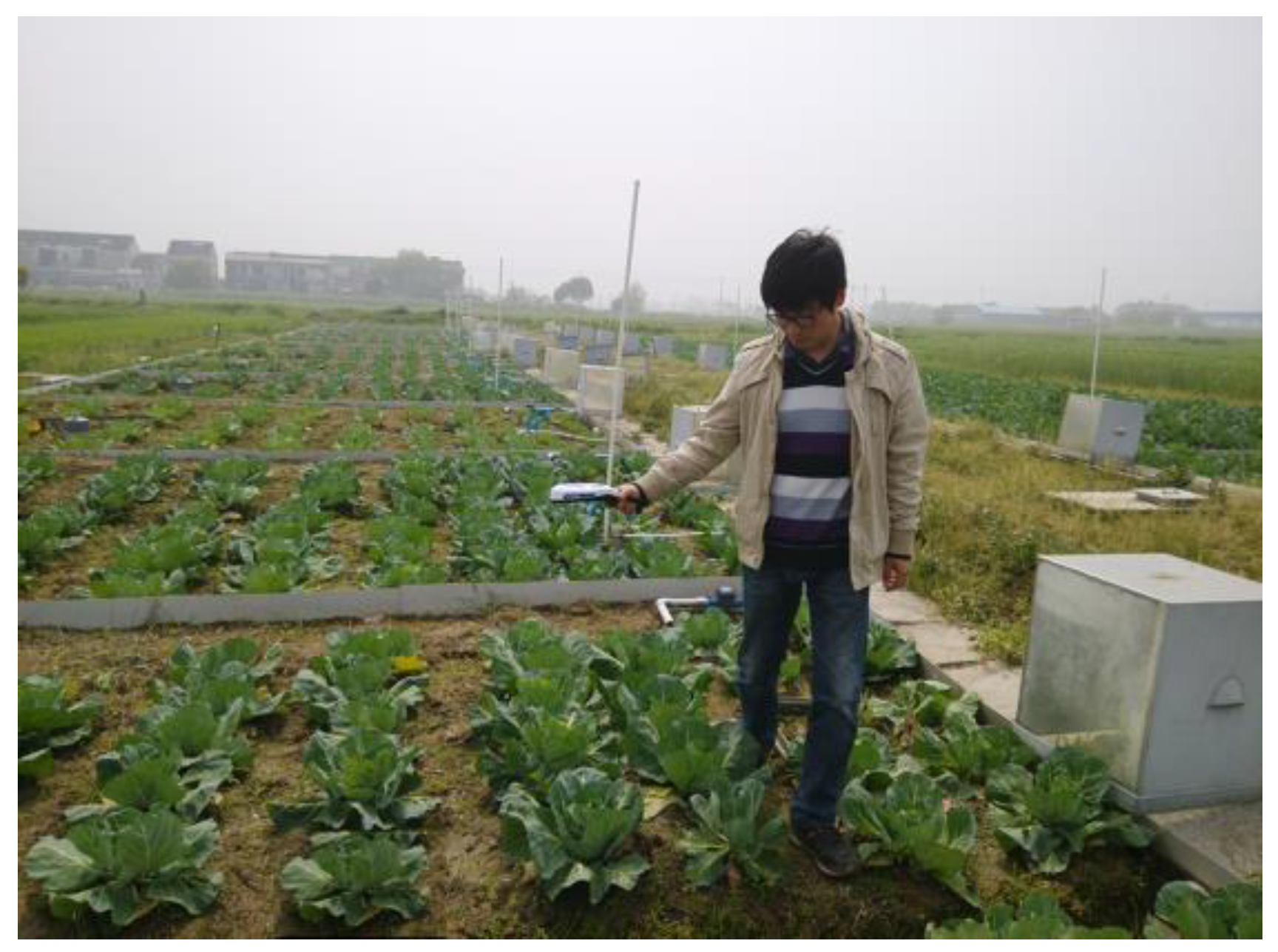

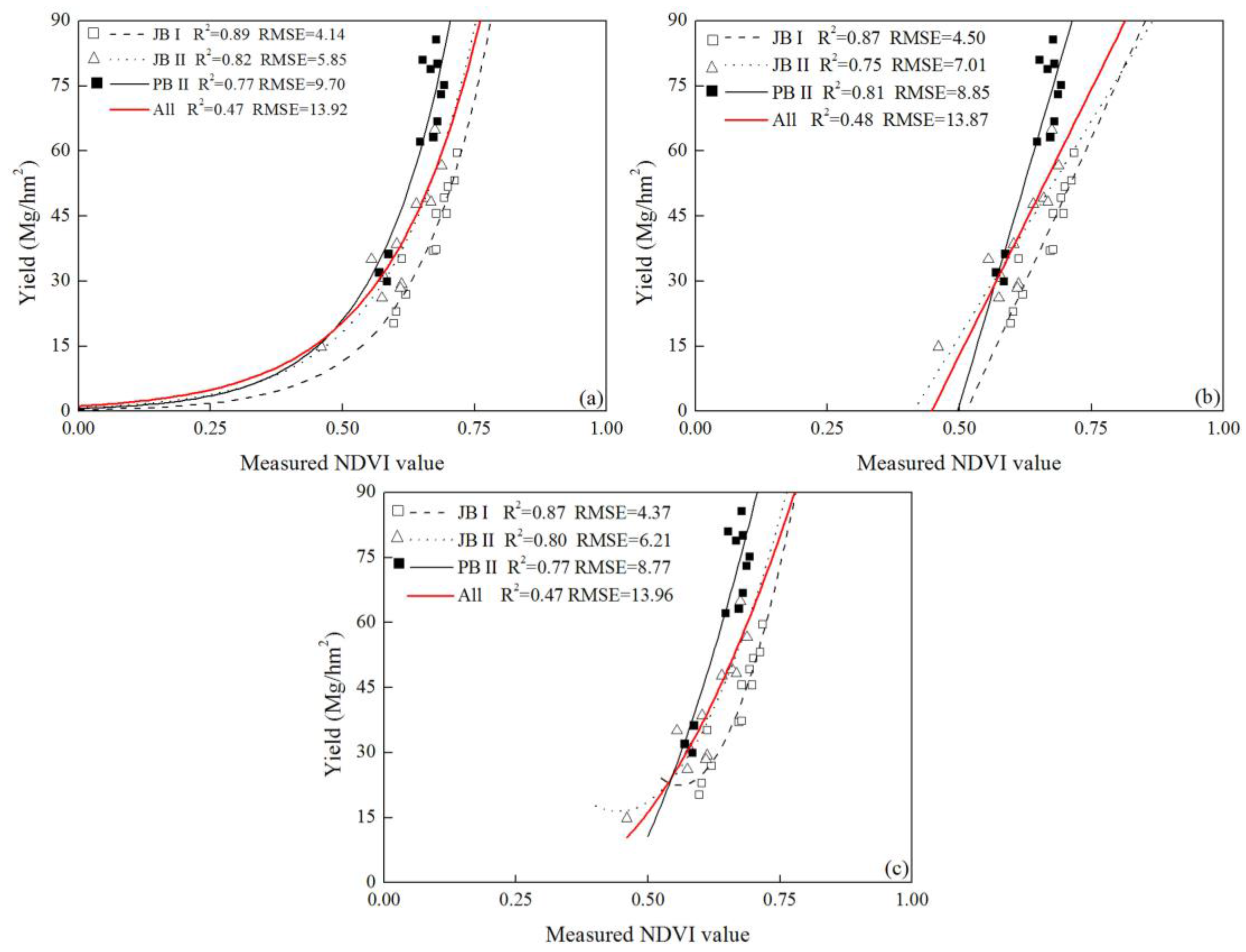
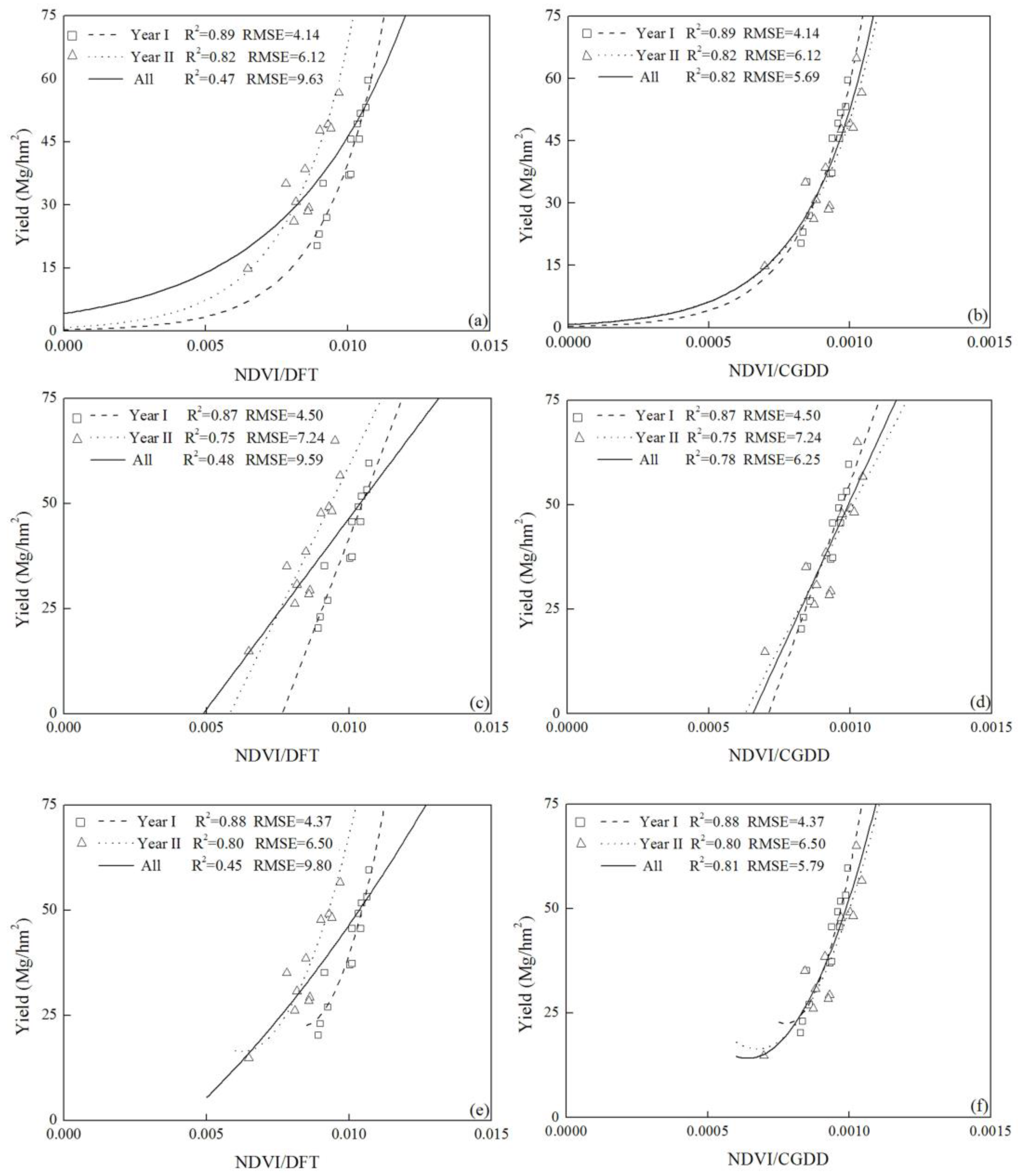
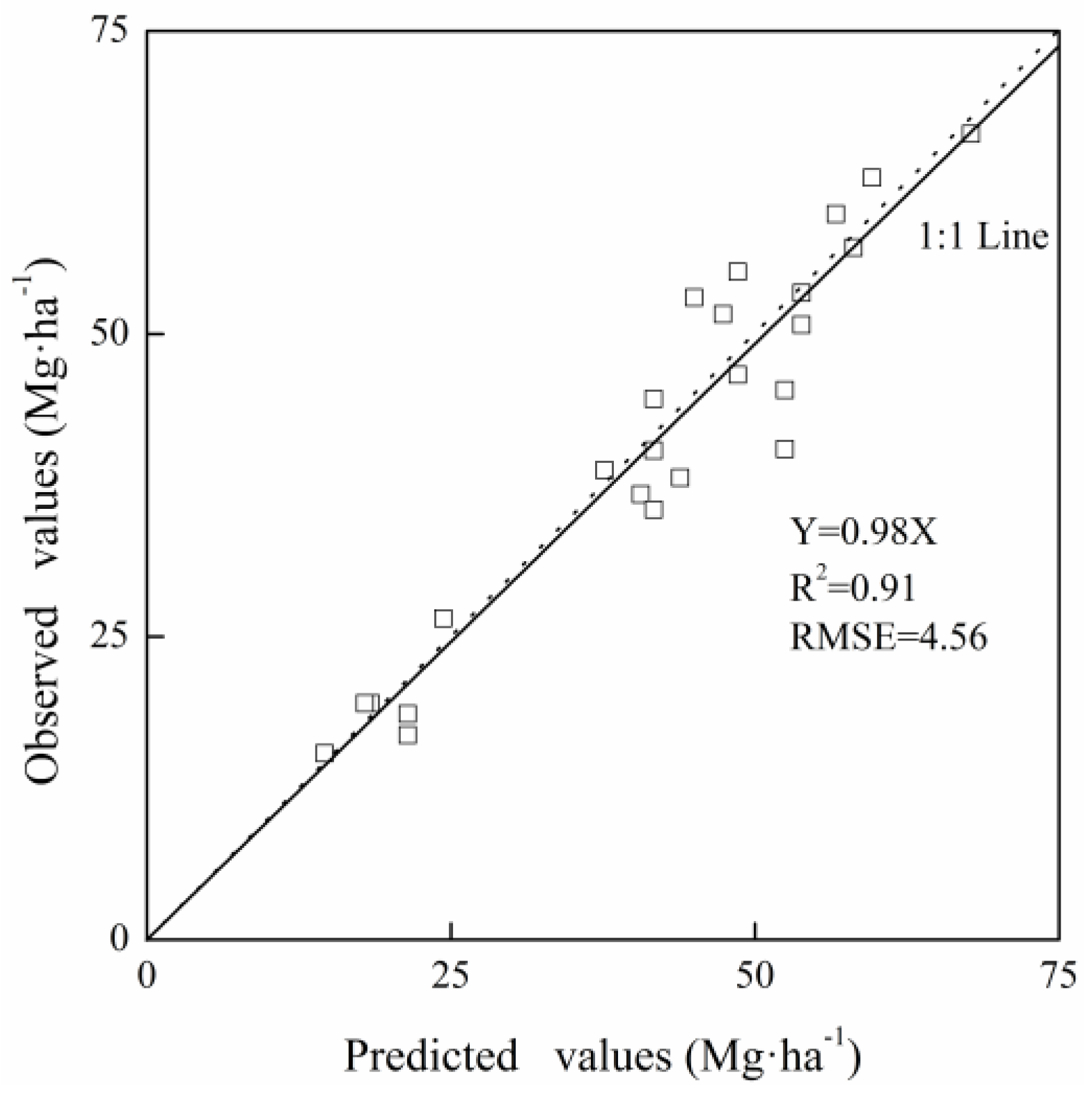
| DAT (Day) | JB I | JB II | PB II |
|---|---|---|---|
| 20 | 0.250 | 0.442 | −0.273 |
| 50 | 0.677 * | 0.566 | −0.038 |
| 70 | 0.452 | 0.573 | 0.109 |
| 80 | 0.807 ** | 0.612 * | −0.389 |
| 90 | 0.888 ** | 0.661 * | 0.110 |
| 100 | 0.807 ** | 0.781 ** | 0.726 ** |
| 110 | 0.940 ** | 0.886 ** | 0.907 ** |
| 120 | 0.895 ** | 0.831 ** | 0.951 ** |
| 130 | 0.761 ** | 0.725 ** | 0.960 ** |
| 140 | 0.891 ** | 0.687 * | 0.956 ** |
| DAT | Cultivar | ||||||||
|---|---|---|---|---|---|---|---|---|---|
| JB I | JB II | PB II | |||||||
| E 1 | L 2 | Q 3 | E | L | Q | E | L | Q | |
| 20 | 0.03 | 0 | 0 | 0.19 | 0.11 | 0.05 | 0.07 | 0 | 0 |
| 50 | 0.36 * | 0.40 * | 0.46 * | 0.25 | 0.25 | 0.17 | 0.01 | 0 | 0 |
| 70 | 0.20 | 0.13 | 0.03 | 0.24 | 0.26 | 0.21 | 0.01 | 0 | 0 |
| 80 | 0.54 ** | 0.62 ** | 0.68 ** | 0.31 * | 0.31 * | 0.24 | 0.16 | 0.07 | 0.05 |
| 90 | 0.76 ** | 0.77 ** | 0.74 ** | 0.38 * | 0.38 * | 0.31 * | 0.01 | 0 | 0 |
| 100 | 0.58 ** | 0.62 ** | 0.58 ** | 0.59 ** | 0.57 ** | 0.52 ** | 0.49 ** | 0.48 ** | 0.47 ** |
| 110 | 0.89 ** | 0.87 ** | 0.87 ** | 0.82 ** | 0.75 ** | 0.80 ** | 0.77 ** | 0.81 ** | 0.77 ** |
| 120 | 0.84 ** | 0.78 ** | 0.86 ** | 0.71 ** | 0.66 ** | 0.66 ** | 0.89 ** | 0.90 ** | 0.89 ** |
| 130 | 0.56 ** | 0.54 ** | 0.54 ** | 0.48 ** | 0.48 ** | 0.42 * | 0.86 ** | 0.91 ** | 0.94 ** |
| 140 | 0.85 ** | 0.77 ** | 0.86 ** | 0.39 * | 0.42 * | 0.41 * | 0.86 ** | 0.91 ** | 0.91 ** |
| Plant Index | Monitoring Time | R2 | Regression Parameters a | RMSE | ||
|---|---|---|---|---|---|---|
| a | b | |||||
| Yield prediction model | NDVI/CGDD | 110 DAT | 0.80 | 0.316 | 5230 | 8.71 |
© 2017 by the authors. Licensee MDPI, Basel, Switzerland. This article is an open access article distributed under the terms and conditions of the Creative Commons Attribution (CC BY) license (http://creativecommons.org/licenses/by/4.0/).
Share and Cite
Ji, R.; Min, J.; Wang, Y.; Cheng, H.; Zhang, H.; Shi, W. In-Season Yield Prediction of Cabbage with a Hand-Held Active Canopy Sensor. Sensors 2017, 17, 2287. https://doi.org/10.3390/s17102287
Ji R, Min J, Wang Y, Cheng H, Zhang H, Shi W. In-Season Yield Prediction of Cabbage with a Hand-Held Active Canopy Sensor. Sensors. 2017; 17(10):2287. https://doi.org/10.3390/s17102287
Chicago/Turabian StyleJi, Rongting, Ju Min, Yuan Wang, Hu Cheng, Hailin Zhang, and Weiming Shi. 2017. "In-Season Yield Prediction of Cabbage with a Hand-Held Active Canopy Sensor" Sensors 17, no. 10: 2287. https://doi.org/10.3390/s17102287





